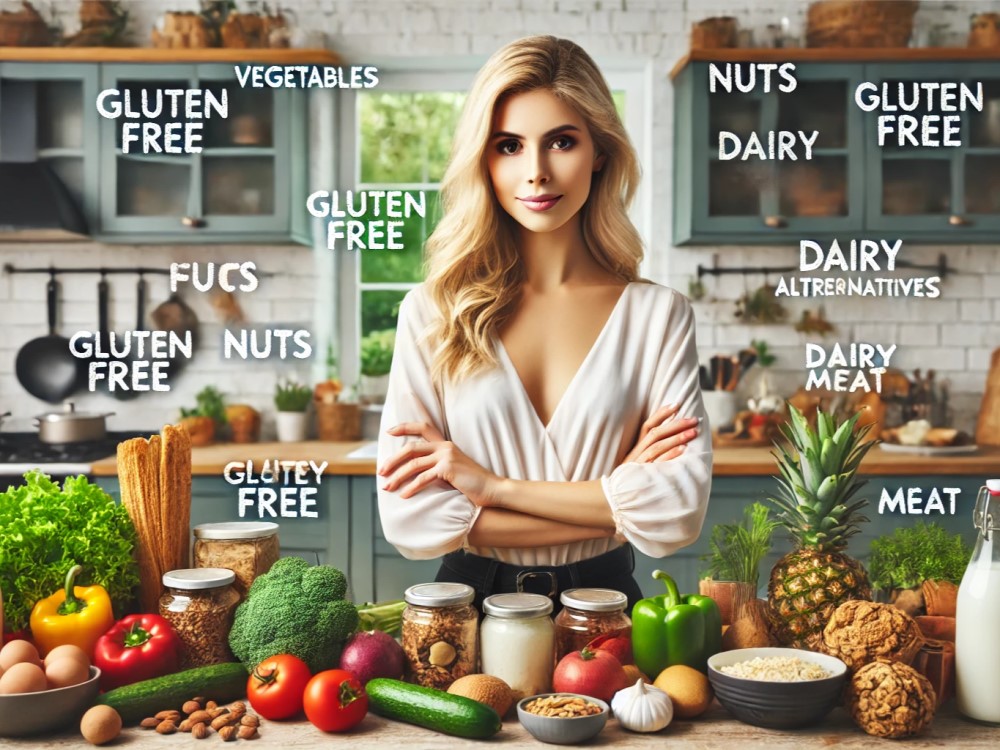
How to Cater for Different Dietary Needs at Hen Dos
Planning a hen do that accommodates various dietary needs can be a bit of a challenge, but with careful consideration and a bit of creativity, it can be done smoothly. Ensuring that all guests feel included and catered for is essential to creating a positive and enjoyable atmosphere. To start with, it’s important to create an inclusive environment at hen dos, where everyone’s dietary preferences and restrictions are respected.
Begin by gathering information about your guests’ dietary needs well in advance. This can be done through a simple survey or by directly asking each attendee. Knowing whether you need to cater for vegetarians, vegans, gluten-free diets, or food allergies will help you plan an appropriate menu and avoid any last-minute surprises. Encouraging open communication ensures that no one feels uncomfortable or left out due to their dietary restrictions.
Once you have a clear understanding of the dietary requirements, you can move on to planning the menu. It’s essential to provide a variety of options to accommodate different preferences. For example, offering both vegetarian and non-vegetarian dishes ensures inclusivity and keeps everyone happy. Incorporating dishes that can be easily modified to suit various diets is also a good strategy. This approach not only meets different dietary needs but also encourages participation and involvement in the meal planning process.
Handling alcohol responsibly is another critical aspect of catering to different dietary needs at hen dos. It’s important to consider non-alcoholic alternatives for those who don’t drink. Providing a range of beverages, including mocktails, juices, and sparkling water, ensures that all guests have something to enjoy. Knowing how to handle alcohol at hen dos can help maintain a balanced and inclusive atmosphere.
Making sure the event is fun for all ages is another key aspect. If your hen do includes guests of varying ages, it’s important to choose activities and foods that cater to everyone. This might mean offering milder food options for younger or older guests and ensuring that all activities are age-appropriate and enjoyable for everyone involved.
Budget considerations are always important, but catering for different dietary needs doesn’t have to break the bank. Planning a budget-friendly hen do involves being resourceful and creative with your menu. Opt for dishes that use seasonal and locally sourced ingredients, which can be more affordable and just as delicious. Additionally, you can plan a hen do on a budget by preparing some dishes at home rather than hiring a caterer, which allows for greater control over the ingredients used.
Fostering an environment that encourages bonding is essential for the success of the hen do. Shared meals are a great way to bring people together, but the food served should not be a point of contention or discomfort. By accommodating everyone’s dietary needs, you ensure that the focus remains on enjoying the company and creating memorable experiences.
Including games and activities that encourage fun and laughter can also enhance the overall experience. These activities can range from fun cooking classes where everyone can participate in making dishes that suit their dietary preferences, to interactive food-related games that everyone can enjoy.
Creating an event that encourages sharing memories and highlights the special moments is crucial. Food plays a significant role in creating these memories, and ensuring that all guests can partake in the meals without feeling excluded is a big part of this.
Maintaining a balance between indulgence and health is also important. Offering a mix of indulgent treats and healthier options caters to different tastes and dietary needs, promoting a balanced and enjoyable experience for all attendees.
Incorporating elements that promote creativity into the hen do can also be beneficial. Creative food presentations and unique dietary-friendly dishes can make the event more exciting and visually appealing.
Finally, surprising the bride-to-be with thoughtful touches that cater to her dietary preferences can make the event even more special. Planning a surprise hen do with her favorite foods, modified to accommodate any dietary needs, shows attention to detail and care.
By keeping these considerations in mind and being proactive in planning, you can ensure that your hen do is a delightful and inclusive event for all guests. With thoughtful preparation and an emphasis on inclusivity, catering to different dietary needs can be seamlessly integrated into your celebration.
Understanding Dietary Needs

To effectively cater to different dietary needs, it’s important to understand the most common dietary restrictions and preferences. Here are some of the key categories to consider:
- Allergies: Food allergies can cause severe reactions, and it’s crucial to avoid cross-contamination. Common allergens include peanuts, tree nuts, shellfish, fish, eggs, milk, wheat, and soy. Even trace amounts of these allergens can cause serious health issues for those affected. Ensuring that these ingredients are completely avoided for allergic guests is essential.
- Intolerances: Food intolerances, such as lactose intolerance and gluten intolerance (celiac disease), can cause discomfort and health problems. Those with lactose intolerance need to avoid dairy products or choose lactose-free options, while individuals with gluten intolerance must avoid gluten, a protein found in wheat, barley, and rye.
- Vegetarian: Vegetarians do not eat meat, poultry, or fish. However, vegetarian diets can vary, with some vegetarians also avoiding products derived from animal slaughter, such as gelatin and rennet. Understanding these nuances is important when planning a vegetarian-friendly menu.
- Vegan: Vegans do not consume any animal products, including meat, dairy, eggs, and honey. Vegan diets focus entirely on plant-based foods, requiring careful selection of ingredients to ensure all dishes are free from animal-derived products.
- Gluten-Free: Individuals with celiac disease or gluten sensitivity must avoid gluten. This includes not only avoiding wheat, barley, and rye but also ensuring that gluten-free foods are not contaminated with gluten during preparation and serving. Using separate utensils and preparation areas is critical.
- Pescatarian: Pescatarians do not eat meat or poultry but do consume fish and seafood. This diet often includes a variety of plant-based foods as well. Providing seafood options along with vegetarian dishes can accommodate pescatarians effectively.
Gathering Information
Before planning the menu, gather information about the dietary needs of all guests. Send out a questionnaire or ask for dietary requirements in the RSVP process. This proactive step ensures you have all the necessary details to accommodate everyone’s needs. Be sure to follow up if any information is unclear or if you need further details about specific dietary restrictions. Providing a comprehensive and accurate picture of dietary requirements allows you to plan effectively and avoid last-minute surprises.
Consider including questions about specific food allergies, intolerances, and dietary preferences. Ask guests to detail any severe allergies that require strict avoidance of certain foods and cross-contamination. Understanding each guest’s needs allows you to plan a menu that everyone can enjoy safely. Additionally, maintaining open communication with guests throughout the planning process ensures that any changes or updates to dietary needs are promptly addressed.
Menu Planning
An inclusive menu is one that offers a variety of options to cater to different dietary needs. Here are some tips for creating a diverse and accommodating menu:
- Offer Variety: Include a range of dishes that cater to different dietary restrictions. Ensure there are options for vegetarians, vegans, and those with allergies or intolerances. Offering a variety of dishes ensures that every guest has something they can enjoy. For example, a buffet with multiple options for each course can accommodate a wide range of dietary needs.
- Label Clearly: Clearly label all dishes with key information, such as “vegan,” “gluten-free,” or “contains nuts.” This helps guests easily identify which foods are safe for them to eat. Using color-coded labels or clear signage can make it easier for guests to navigate the food options. Providing detailed ingredient lists can also help guests with allergies or intolerances make informed choices.
- Avoid Cross-Contamination: When preparing and serving food, take steps to avoid cross-contamination. Use separate utensils, cutting boards, and serving dishes for different dietary needs. Training staff or volunteers on proper food handling procedures is essential to prevent cross-contamination. Ensure that all kitchen surfaces and equipment are thoroughly cleaned before preparing food for guests with allergies.
- Balance the Menu: Ensure the menu includes a variety of appetizers, main courses, sides, and desserts that cater to different dietary preferences. This balance ensures that all guests have plenty of options to choose from. Consider including a mix of hot and cold dishes, as well as a variety of textures and flavors to keep the menu interesting and appealing.
Sample Menu Ideas
Here are some sample menu ideas that cater to different dietary needs:
Appetizers
- Vegetarian: Caprese skewers (mozzarella, cherry tomatoes, basil), hummus with vegetable crudités, stuffed mushrooms. These appetizers are not only delicious but also provide a range of flavors and textures to suit different tastes.
- Vegan: Avocado toast bites, vegan spring rolls, roasted chickpeas. Vegan appetizers can be both nutritious and flavorful, showcasing the versatility of plant-based ingredients.
- Gluten-Free: Shrimp cocktail, deviled eggs, gluten-free bruschetta. Gluten-free appetizers ensure that guests with gluten intolerance have tasty options to enjoy.
Main Courses
- Vegetarian: Eggplant parmesan, vegetable lasagna, stuffed bell peppers. These hearty dishes are satisfying and full of flavor, making them a hit with both vegetarians and non-vegetarians.
- Vegan: Quinoa-stuffed portobello mushrooms, vegan curry, tofu stir-fry. Vegan main courses can be rich and varied, offering a range of flavors and textures that appeal to all guests.
- Gluten-Free: Grilled salmon, chicken and vegetable skewers, gluten-free pasta with marinara sauce. Gluten-free main courses ensure that guests with celiac disease or gluten sensitivity can enjoy a delicious and satisfying meal.
Sides
- Vegetarian: Greek salad, roasted Brussels sprouts, garlic bread. These sides complement the main courses and add variety to the menu.
- Vegan: Sweet potato fries, quinoa salad, sautéed green beans. Vegan sides are both nutritious and delicious, offering a range of flavors and textures.
- Gluten-Free: Roasted vegetables, gluten-free macaroni and cheese, cucumber salad. Gluten-free sides ensure that guests with dietary restrictions have plenty of options to choose from.
Desserts
- Vegetarian: Cheesecake bites, fruit tart, chocolate mousse. These desserts are indulgent and satisfying, perfect for a celebratory event.
- Vegan: Vegan brownies, coconut milk ice cream, fruit salad. Vegan desserts can be both delicious and decadent, showcasing the versatility of plant-based ingredients.
- Gluten-Free: Flourless chocolate cake, gluten-free cookies, panna cotta. Gluten-free desserts ensure that guests with dietary restrictions can indulge in sweet treats without worry.
Ingredient Substitutions

When catering to dietary needs, knowing how to substitute ingredients is essential. Here are some common substitutions for various dietary restrictions:
- Eggs: For vegan or egg-allergic guests, substitute eggs with flaxseed meal (1 tablespoon flaxseed meal + 3 tablespoons water per egg), applesauce (1/4 cup per egg), or commercial egg replacers. These substitutes work well in baking and can be used to create a variety of egg-free dishes.
- Dairy: Substitute cow’s milk with almond milk, soy milk, or oat milk. Use coconut yogurt or cashew cream in place of dairy-based yogurt or cream. These dairy-free alternatives provide a similar texture and flavor, making them great substitutes in recipes.
- Gluten: Use gluten-free flours such as almond flour, coconut flour, or rice flour. Replace regular pasta with gluten-free pasta options made from corn, quinoa, or rice. Gluten-free baking mixes and bread alternatives are also widely available and can be used to create delicious gluten-free dishes.
- Meat: For vegetarian or vegan guests, substitute meat with tofu, tempeh, seitan, or legumes like lentils and chickpeas. These plant-based proteins can be used in a variety of dishes to create satisfying and nutritious meals.
Recipe Adjustments
Adjusting recipes to cater to dietary needs can be straightforward with the right substitutions. For example, a traditional lasagna can be made vegetarian by using vegetables and ricotta cheese instead of meat. It can be made vegan by using a cashew-based “ricotta” and plant-based meat alternatives. Gluten-free lasagna noodles can be used to accommodate those with gluten intolerance.
Similarly, dairy-based desserts can be made vegan by using plant-based milk and cream alternatives. For instance, a classic cheesecake can be made vegan by using cashew cream cheese and coconut milk. Gluten-free flour can be used in baking to create delicious and safe desserts for those with gluten intolerance.
Experimenting with substitutions can lead to discovering new and exciting flavors and textures. It’s important to taste-test recipes to ensure that the substitutions work well and that the final dish is delicious. By being creative and open to new ingredients, you can create a menu that caters to all dietary needs without compromising on taste or quality.
Working with Caterers and Restaurants
If you’re working with a caterer or hosting the hen do at a restaurant, clearly communicate the dietary needs of your guests. Provide detailed information about allergies, intolerances, and preferences, and ask how the caterer or restaurant can accommodate these needs. Ensure they understand the importance of avoiding cross-contamination and using separate preparation areas for different dietary requirements.
When discussing the menu with the caterer or restaurant, ask about their experience in handling dietary restrictions and their protocols for preventing cross-contamination. Providing a written list of dietary needs and specific requests can help ensure that nothing is overlooked. Regular communication and follow-up are key to ensuring that all dietary needs are met.
Choosing the Right Caterer or Restaurant
Select a caterer or restaurant experienced in handling diverse dietary needs. Look for reviews or ask for recommendations from others who have had similar requirements. A reputable caterer or restaurant will be willing to work with you to create a menu that meets all dietary needs and ensures a safe and enjoyable dining experience for everyone.
When choosing a caterer or restaurant, consider their flexibility and willingness to customize the menu. Ask about their ability to provide separate preparation areas and utensils for different dietary needs. Reviewing sample menus and discussing specific substitutions and alternatives can help you gauge their expertise and commitment to accommodating your guests.
Additionally, visiting the venue or kitchen can provide insight into their practices and facilities. Ensuring that the caterer or restaurant is well-equipped to handle dietary restrictions can give you peace of mind and confidence in their ability to deliver a successful event.
Creating a Welcoming Atmosphere

Creating a welcoming atmosphere goes beyond just the food. Ensure that the dining experience is inclusive and comfortable for all guests. This includes:
- Seating Arrangements: Arrange seating to encourage mingling and conversation. Consider having a mix of tables and comfortable seating areas. Providing inclusive seating arrangements ensures that everyone feels welcome and included.
- Accessibility: Ensure the venue is accessible to guests with mobility issues or other special needs. Providing accessible entrances, restrooms, and seating areas demonstrates consideration for all guests.
- Activities: Plan activities that everyone can participate in, regardless of dietary restrictions. This can include games, photo booths, and other entertainment options. Inclusive activities ensure that all guests can engage and enjoy the event.
Special Touches
Adding special touches can make guests with dietary needs feel even more valued and included. Consider the following:
- Personalized Menus: Create personalized menus or place cards that highlight the dishes available for each dietary preference. This shows attention to detail and consideration for individual needs.
- Custom Treats: Offer custom treats or favor bags tailored to different dietary needs. For example, vegan cupcakes or gluten-free cookies can be a thoughtful and delicious addition. Providing customized treats ensures that all guests feel included and can enjoy the celebration.
- Feedback and Appreciation: After the event, seek feedback from guests about their dining experience. Showing appreciation for their input and making improvements for future events demonstrates a commitment to inclusivity. Regularly seeking feedback helps you refine your approach and ensures that future events are even more successful.
Conclusion: Planning Inclusive Menus for a Memorable Hen Do

Catering to different dietary needs at hen dos requires careful planning and consideration, but the effort is well worth it. By understanding common dietary restrictions, creating an inclusive menu, making thoughtful ingredient substitutions, and working with experienced caterers or restaurants, you can ensure that all guests have a positive and enjoyable experience. An inclusive dining experience not only meets the needs of your guests but also creates a welcoming and celebratory atmosphere that enhances the overall success of the hen do.
Understanding common dietary restrictions is the first step in planning an inclusive menu. Take the time to gather information about any allergies, intolerances, or dietary preferences among your guests. This awareness will guide your menu planning and help you make informed choices that cater to everyone’s needs.
Creating an inclusive menu involves offering a variety of options that accommodate different dietary requirements. Consider providing vegetarian, vegan, gluten-free, and allergen-free dishes to ensure there is something for everyone. Labeling each dish clearly can also help guests easily identify what they can eat, reducing any anxiety or confusion during the event.
Making thoughtful ingredient substitutions can transform traditional recipes into inclusive dishes without compromising on taste. For example, using gluten-free flour in baked goods, plant-based milk in creamy dishes, or nut-free ingredients in sauces can make a significant difference. These small adjustments show consideration and respect for your guests’ dietary needs, making them feel valued and included.
Working with experienced caterers or restaurants can simplify the process of planning an inclusive menu. Professionals in the culinary industry are often well-versed in accommodating dietary restrictions and can offer creative solutions and delicious alternatives. Collaborating with experts ensures that the food is not only safe and suitable for all guests but also of high quality and taste.
Ensuring that all guests feel valued and included through thoughtful menu planning and attention to detail makes for a successful and joyous hen do. By understanding dietary restrictions, creating an inclusive menu, making thoughtful ingredient substitutions, and working with experienced caterers or restaurants, you can confidently plan a memorable and inclusive celebration for everyone. The effort put into catering to different dietary needs will be appreciated by your guests and contribute to a positive and celebratory atmosphere that enhances the overall success of the event.





